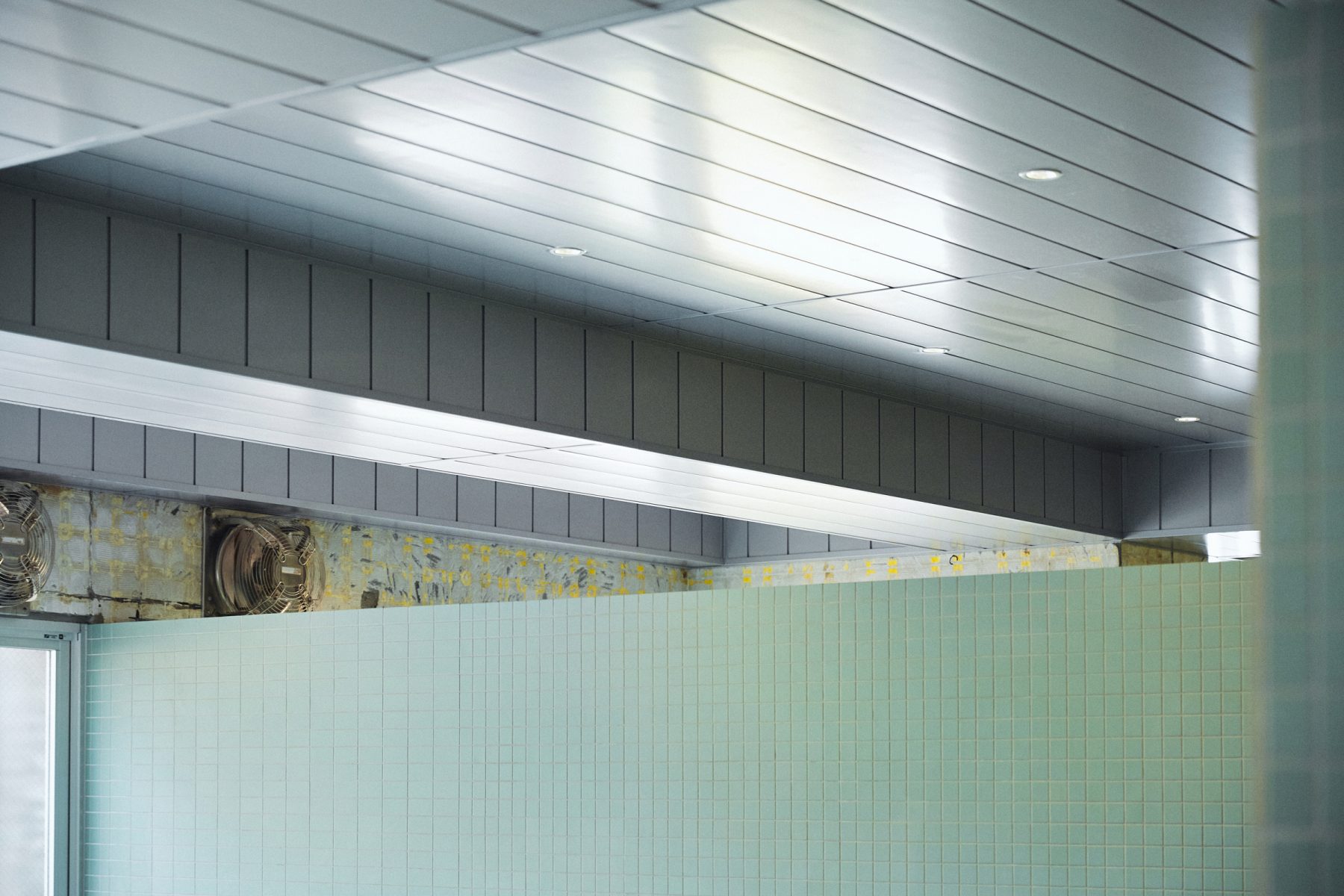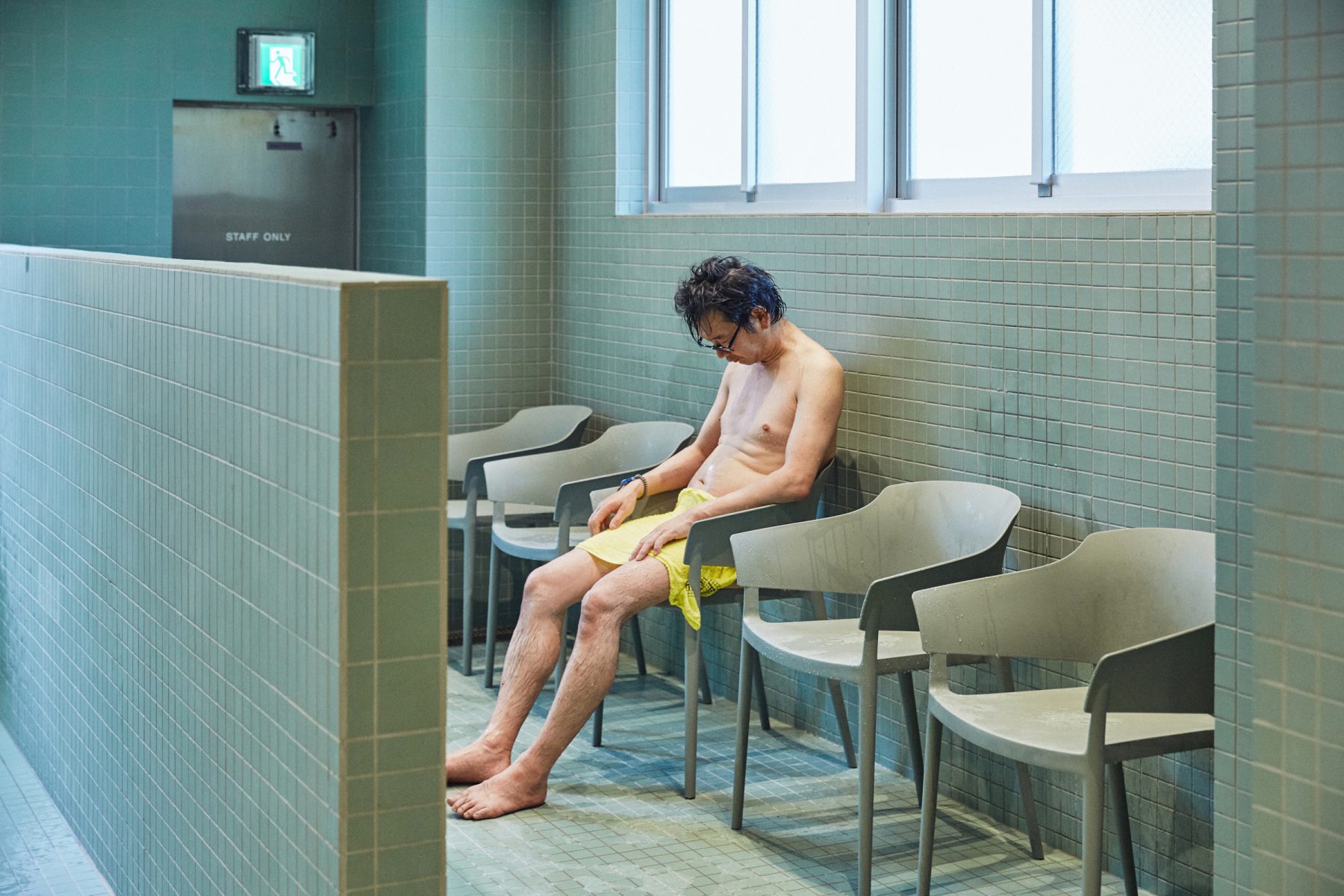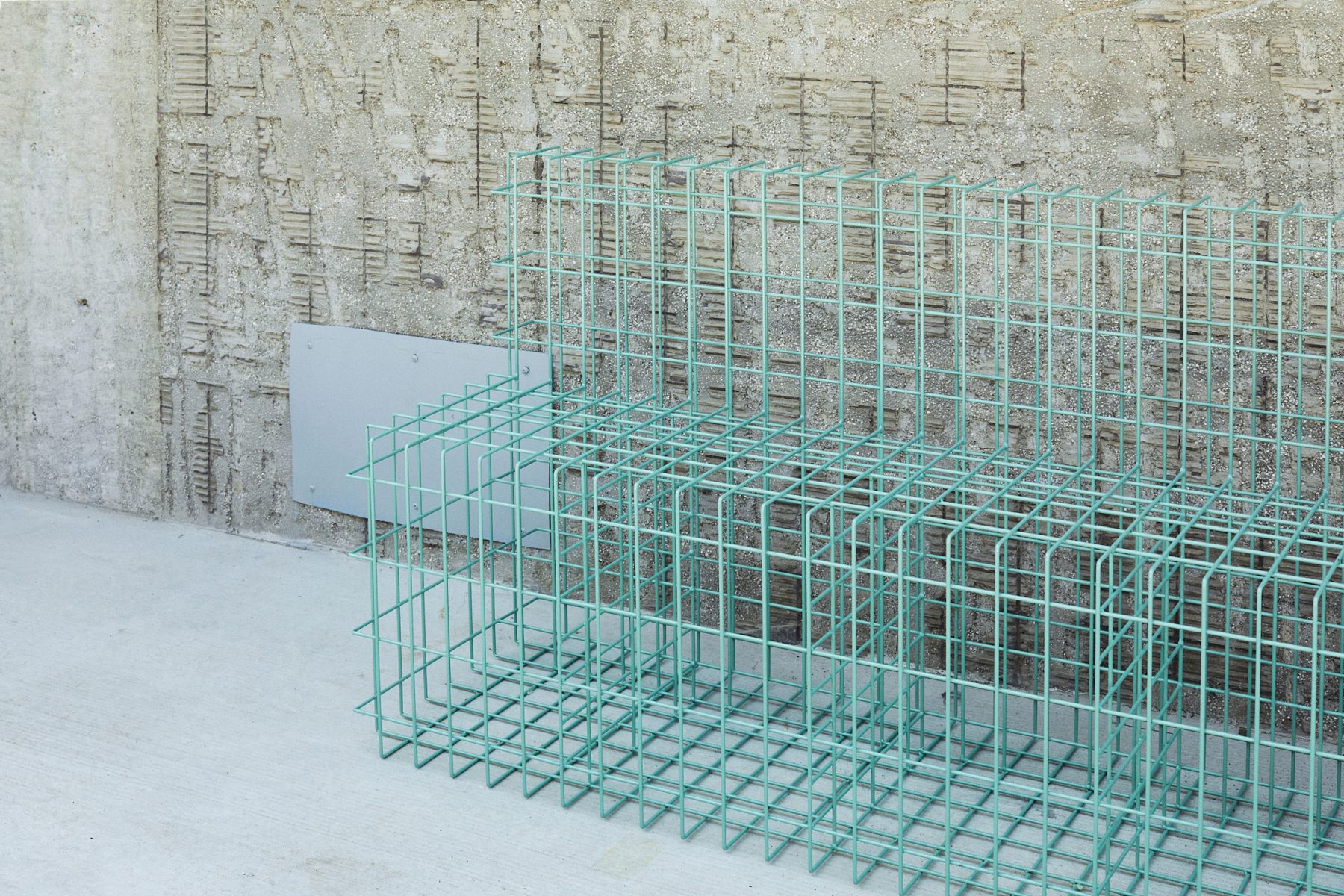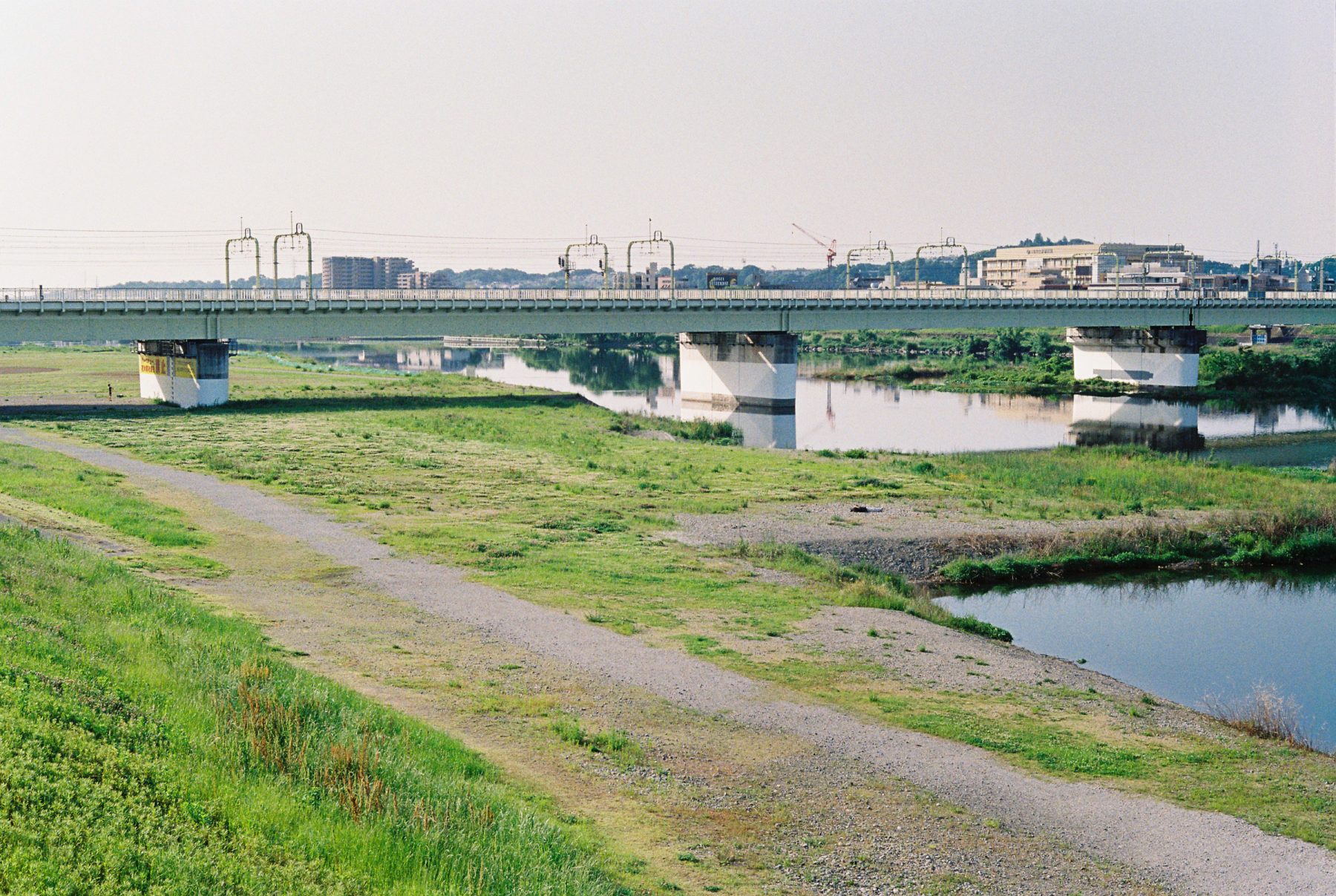























Komaeyu
This project is the second public bathhouse Schemata Architects has designed. Originally, sento (public bathhouses) quickly sprang up in the Kanto region when there were no baths in homes, especially after World War II, to improve public sanitation. At that time, Mt. Fuji was painted on the walls of many sento in the Kanto region as a symbol of hope. And the daily routine of going to the bathhouse connected people, and the bathhouse functioned as a place for the local community.
More than half a century later, public bathhouses have become obsolete as every household has its bath, and showering in the morning has become a common practice under the influence of Western culture. Of course, some customers come to the bathhouse as part of their daily routine even though they have a bath at home, but this is not enough to carry on the bathhouse business to the next generation, and recently, bathhouses have been disappearing from the city in the blink of an eye.
Komae-yu was one such example, but the owner, Mr. Nishikawa, wanted to preserve the bathhouse and decided to manage it himself as the successor. Meanwhile, he saw the Kogane-yu, the first public bathhouse we had undertaken, and approached us. At Kogane-yu, in the hope of offering a little extra refreshment, we provided a sauna and a “bandai” (reception counter) where you can drink beer, in addition to bath facilities. The same concept was used for this project. Since the location is only a 30-minute walk or a 15-minute train ride from where I live, I took on the design as if it were my go-to bathhouse and community.
Initially, like Kogane-yu, Komae-yu was a building-type public bathhouse, part of a reinforced concrete building with living space on the upper floors. However, because the site is in the suburbs of Komae, there are many vacant lots nearby, and we decided to create a public bathhouse that would take advantage of the available space. We imagined how the vacant space would intertwine with culverts that have turned into green spaces over time and decided that we could create a public bathhouse that would incorporate such greenery, along with cozy saunas and a bar. We custom-made original green tiles in Tajimi to create an affinity with the greenery.
Recalling my favorite experiences of vaguely gazing at the patchwork of tiles in old public bathhouses in Kyoto and other cities and gradually feeling a sense of incongruity and the “aha” moment when I recognized the patterns of the different tiles, I wanted to do something similar. We made the custom tiles in 47x47mm, 97x97mm, and 47x97mm square sizes and arranged them in ways they alternate as subtly as possible.
In the past, the building had a pub run by the owner’s aunt in the front and a public bathhouse in the back. The new bathhouse connects the bath and eating areas inside with a tiled Mt. Fuji on the wall and a bar and bandai surrounding it. The vacant lot adjacent to the bathhouse has turned into a gathering place where people can enjoy a drink after a bath while looking at Mt. Fuji. In less than a month since its opening, Komae-yu is gradually becoming a community hub, reclaiming the role of a public bathhouse as an integral part of the local community.
DATA
Title: Komaeyu
Architect: Jo Nagasaka / Schemata Architects
Project team: Shota Miyashita Takuya Enta
Graphic design: village®︎
Structural Consulting: ladderup architects
Construction:
TANK (architecture)
Sankyo Corporation (water works)
Toyama tile Limited Liability Company(tile works)
Thermarivm (sauna)
Location: 1-12-6 Higashiizumi, Komaeshi, Tokyo
Usage: public bathhouse
Collaboration:
TAJIMI CUSTOM TILES(tile)
WHITELIGHT (sound plan)
HOSHIZAKI (kitchen)
Photo:Ju Yeon Lee
Number of stories : 3 floors above ground / 1 floor under ground
Total floor area: 994.64㎡(1F 302.53㎡)
Type of structure: RC
Completion: March, 2023
Opening: April, 2023